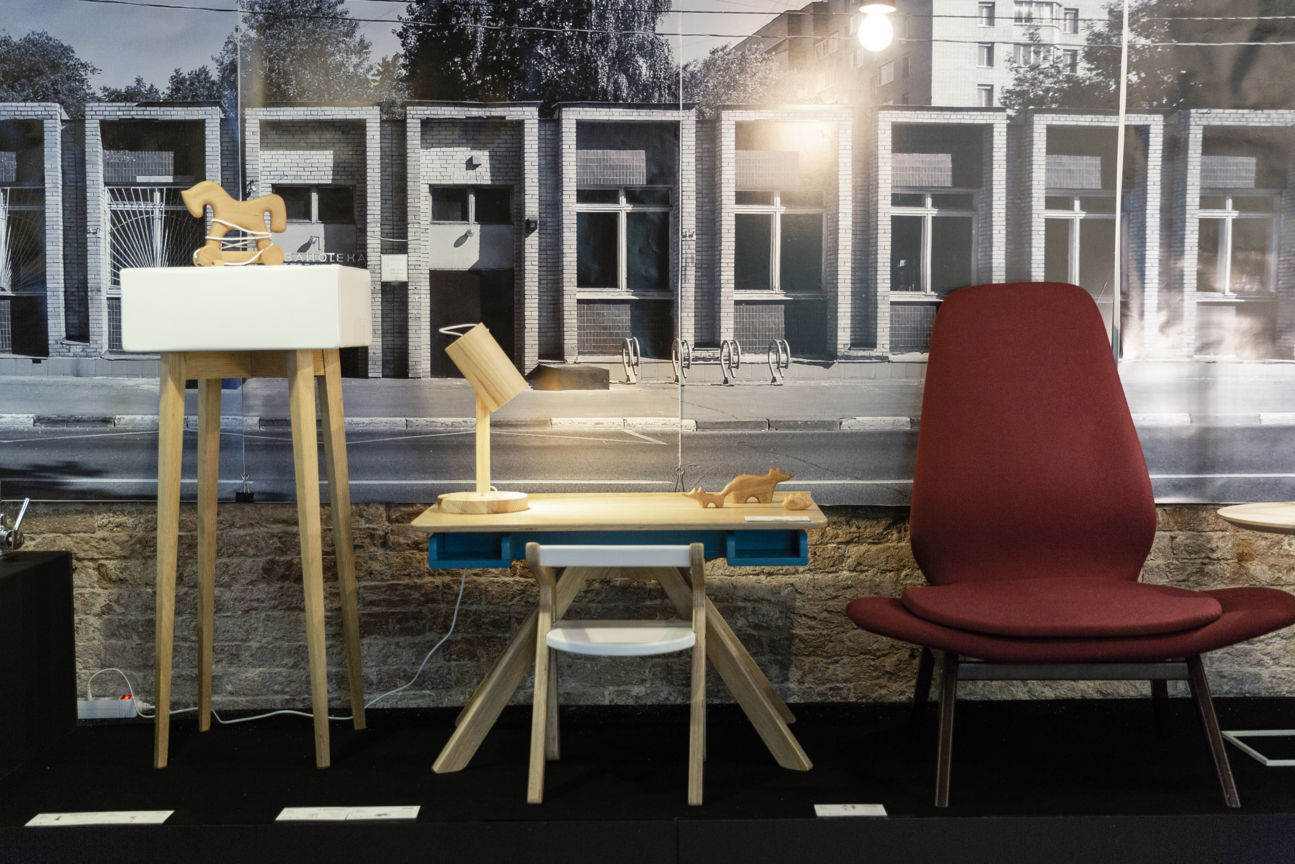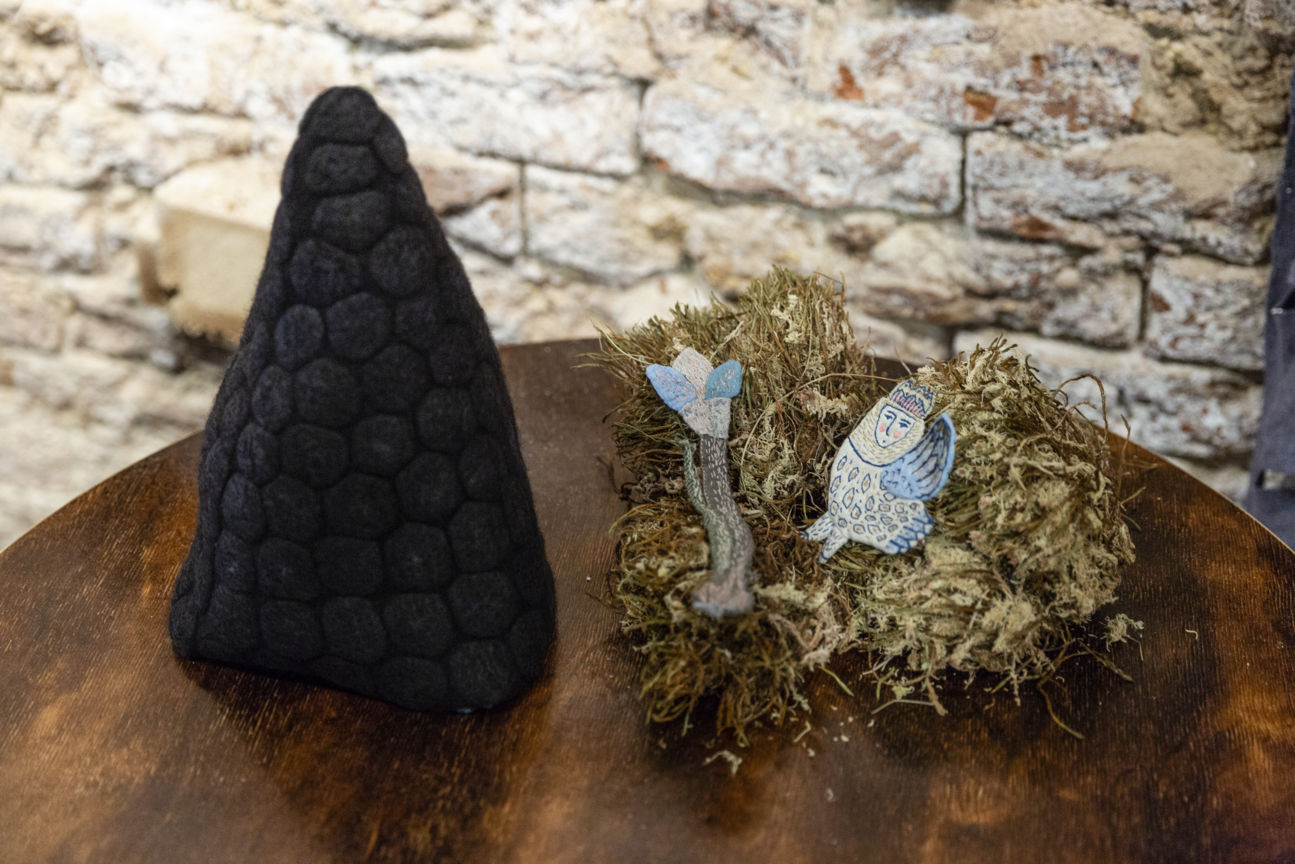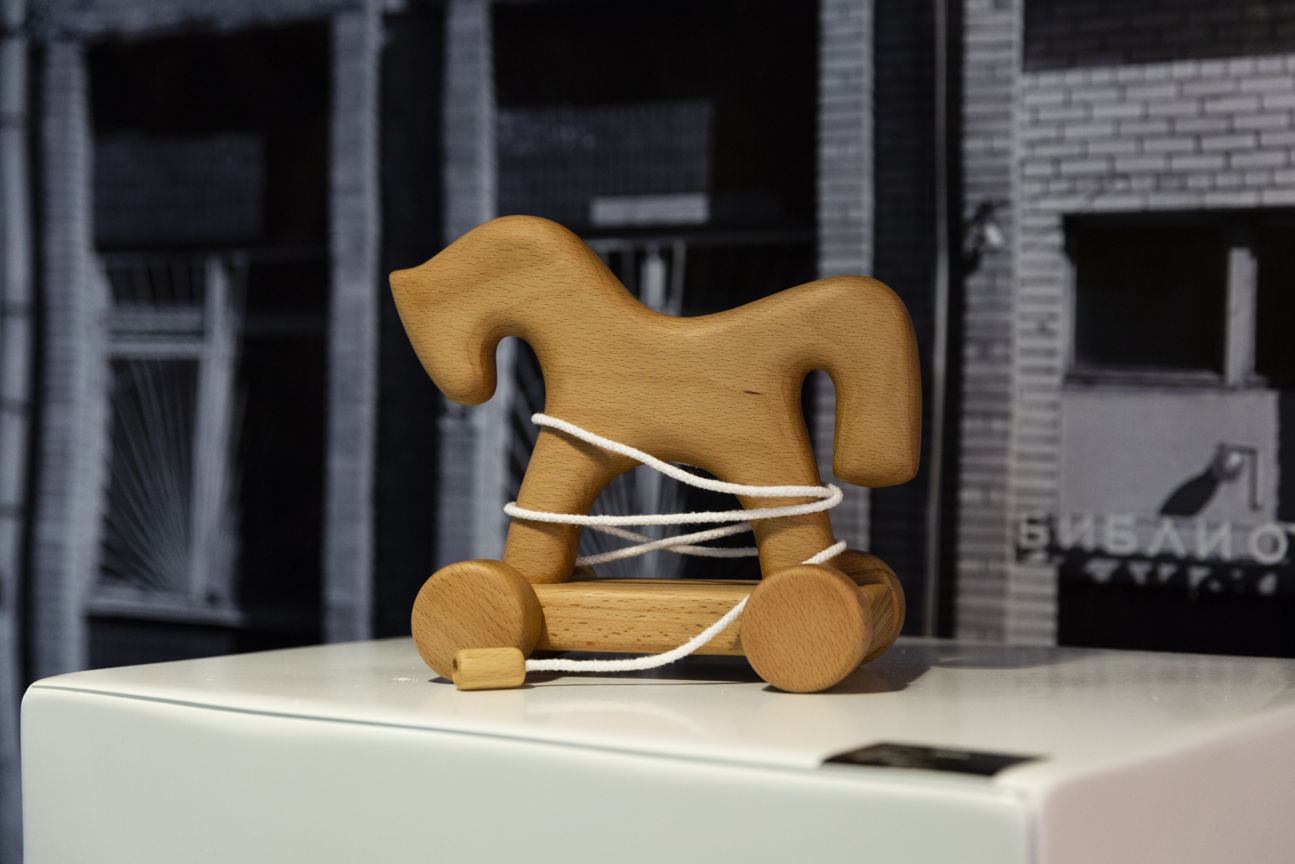Designers: Anna Kharchenko, ARCHPOLE, ART_ALIBI (Alexandra Tareeva, Olga Davidova), Biome design (Nikita Gorshkov, Petr Kroshchinskiy), MOONK (Maria Burtseva and Vera Sereda), ODINGENIY (Daria Verina, Konstantin Verin), Olesia Simchuk, PLAYPLY (Maria Karasik, Andrey Anisimov), SILA MAZHOROV (Triputa Valeriy), The LoftLab (Alexandr Zhohov), TOMOV WORKSHOP (Eugeniy Tomov) Uniquely (Anna Brukhova) WATCH&SEE (Ekaterina Borisova), WOODLED (Denis Dianov, Eugenia Dianova)
Curated by Tatiana Verevkina

During the times of the Soviet Union, the system of public libraries was one of the main cultural references for the Russian people. Thought by the government to serve both as an instrument for scientific and technical education and for the communication of the Soviet ideology, "mass libraries" were among the liveliest public spaces. Since the decay of the USSR system in 1991, worsened by the broad access to technology today, Post-Communist governments have had to deal with a great decrease in the popularity of these institutions – over 48,000 centres. Authorities, architects and designers have been rethinking the social role and the functions that the library system should meet for contemporary Russia. What remains unmovable is our need for human interaction, social exchange, and new experiences.
The exhibition was a project promoted by the Government of Moscow in collaboration with the Ministry of Foreign Affairs and the Industrial Designers Club. Library 2018 brought together Russian architecture, design and craft. In regards to the library's character as cultural and social centres, we invited the participants to this project to design their ideal library according to the three functional zones of the modern library: reception area, display area, and an area for public gathering.
The participants of this installation, on view at the ground floor of Palazzo Contarini Polignac, ranged from among some of the main signature designers of Russia to well-reputed artisans who, together, offered a selection of objects which stirred up the architecture of Russian public spaces and libraries.
The show ended with photographs of major libraries of Moscow and of the projects of the young architects who have determined their re-structuration. Through this, Moscow presented itself as an example of the new art and architecture community.

“First, we did not own an industry of interior design objects, and we used to buy them outside - says the curator Tatiana Verevkina, from the Industrial Designers Club -, today things have changed up, our professionals compete with worldwide designers in both aesthetical and qualitative level. Our country loves creating objects with its own hands and putting its soul in it; for these pieces have a soul, one of Russia”.
The exhibition folded out to a second chapter consisting of a series of discussions and talks by experts in the field.



Ph. Teo Zanin




